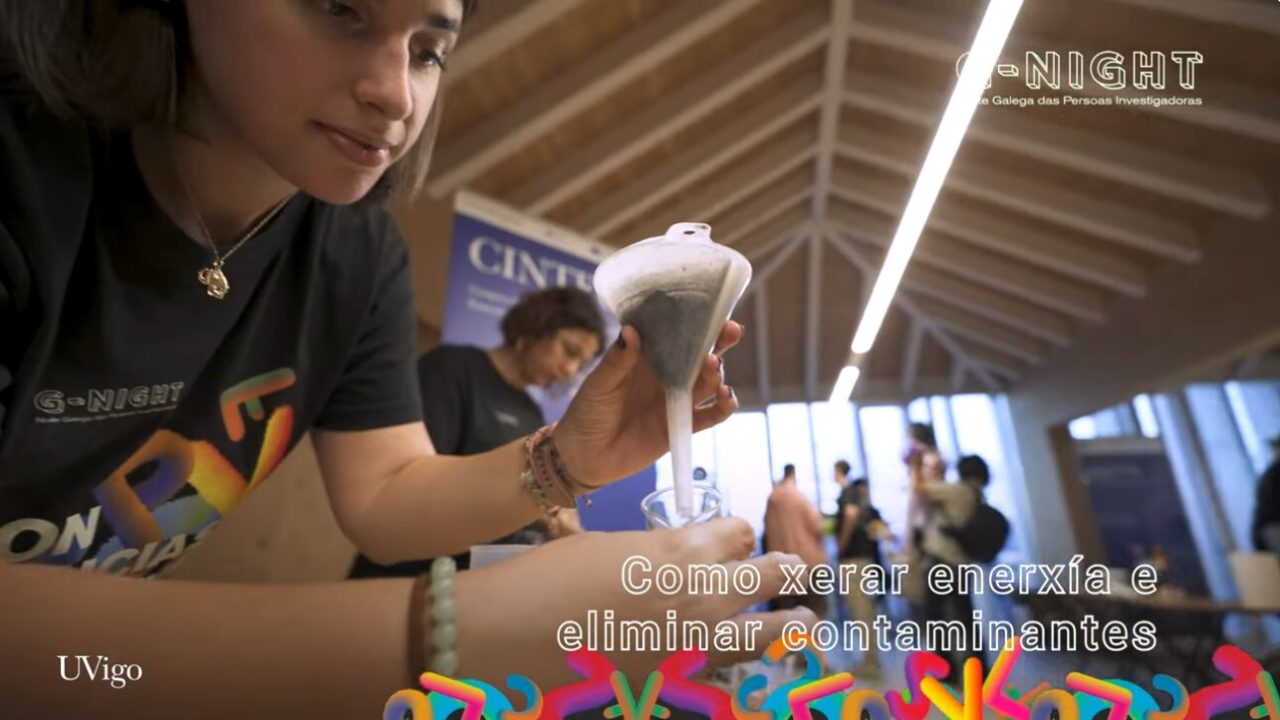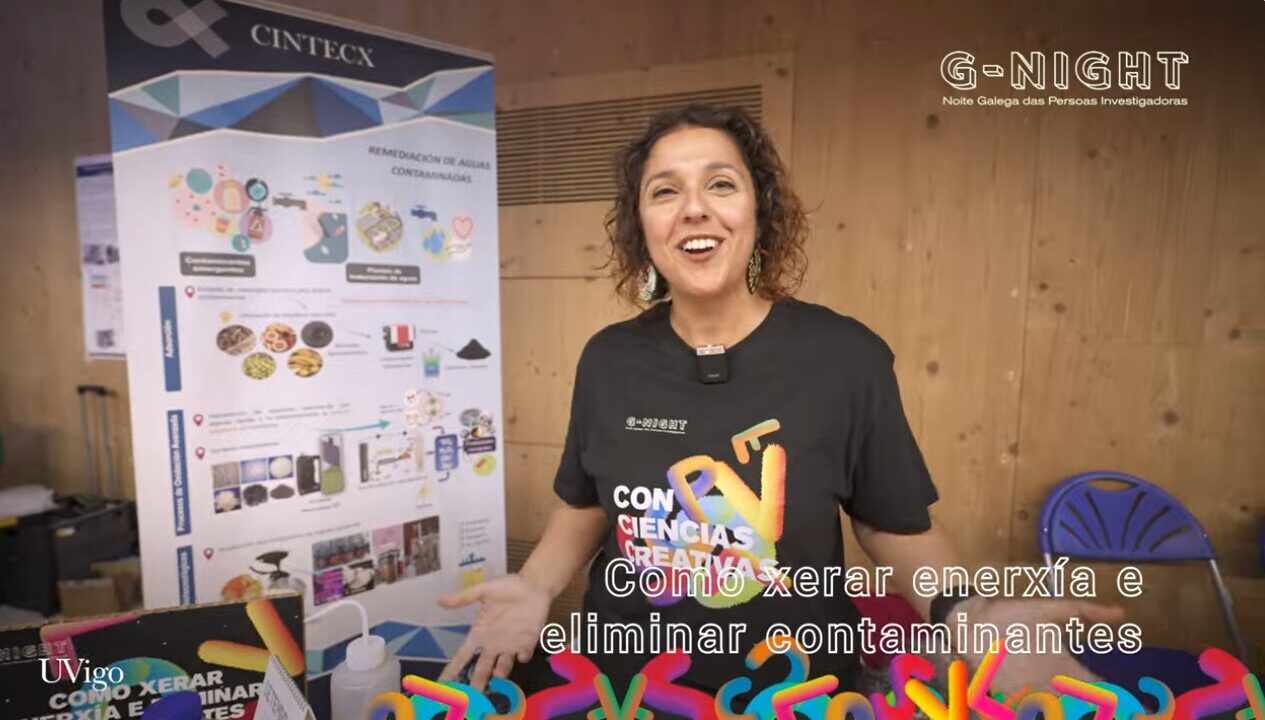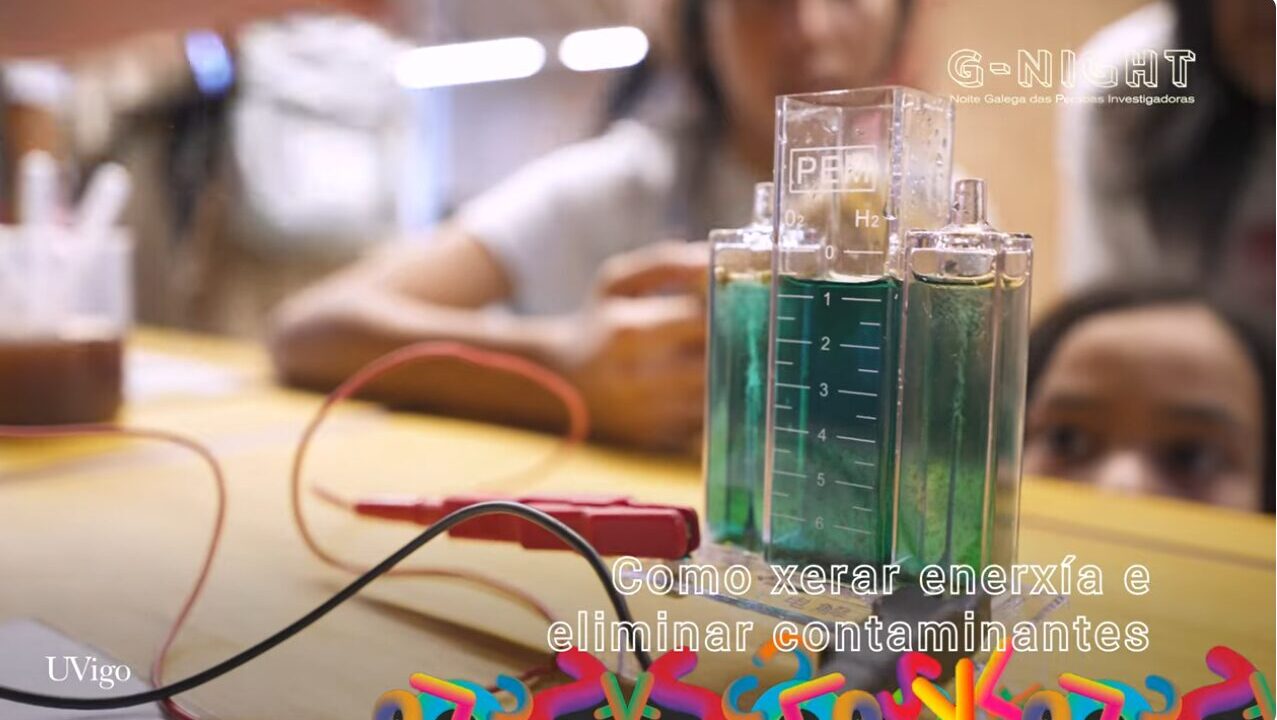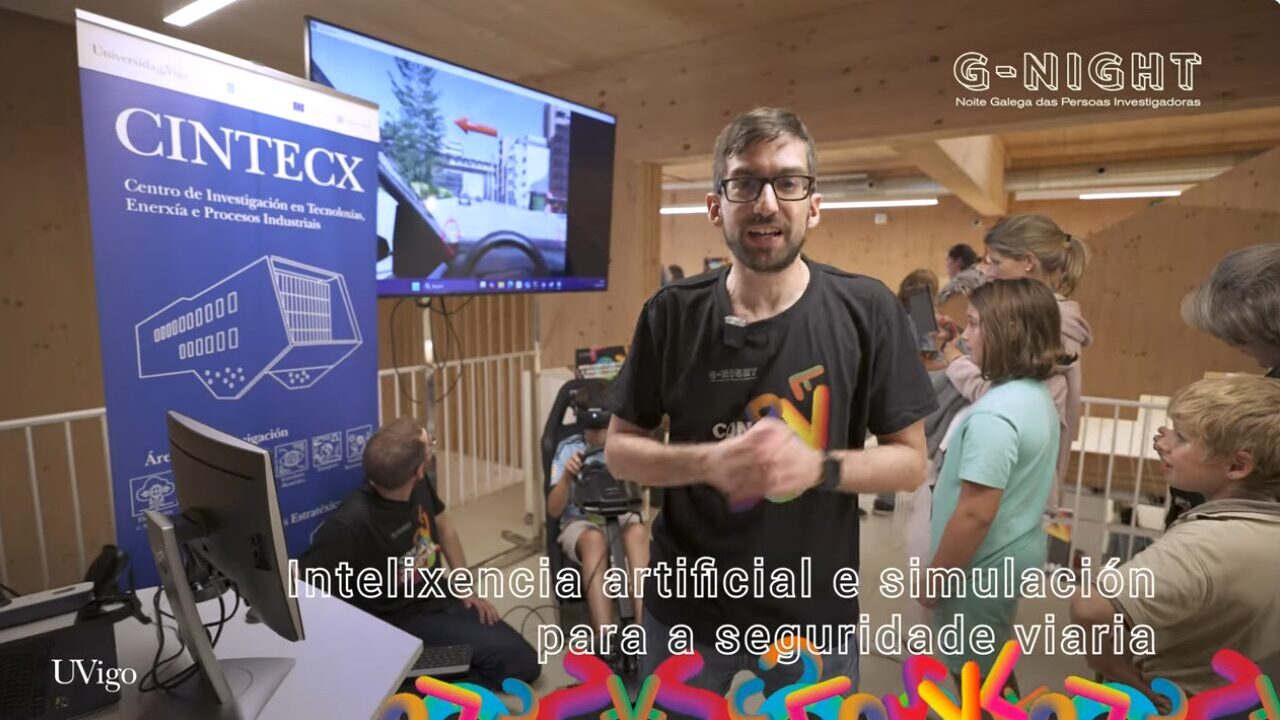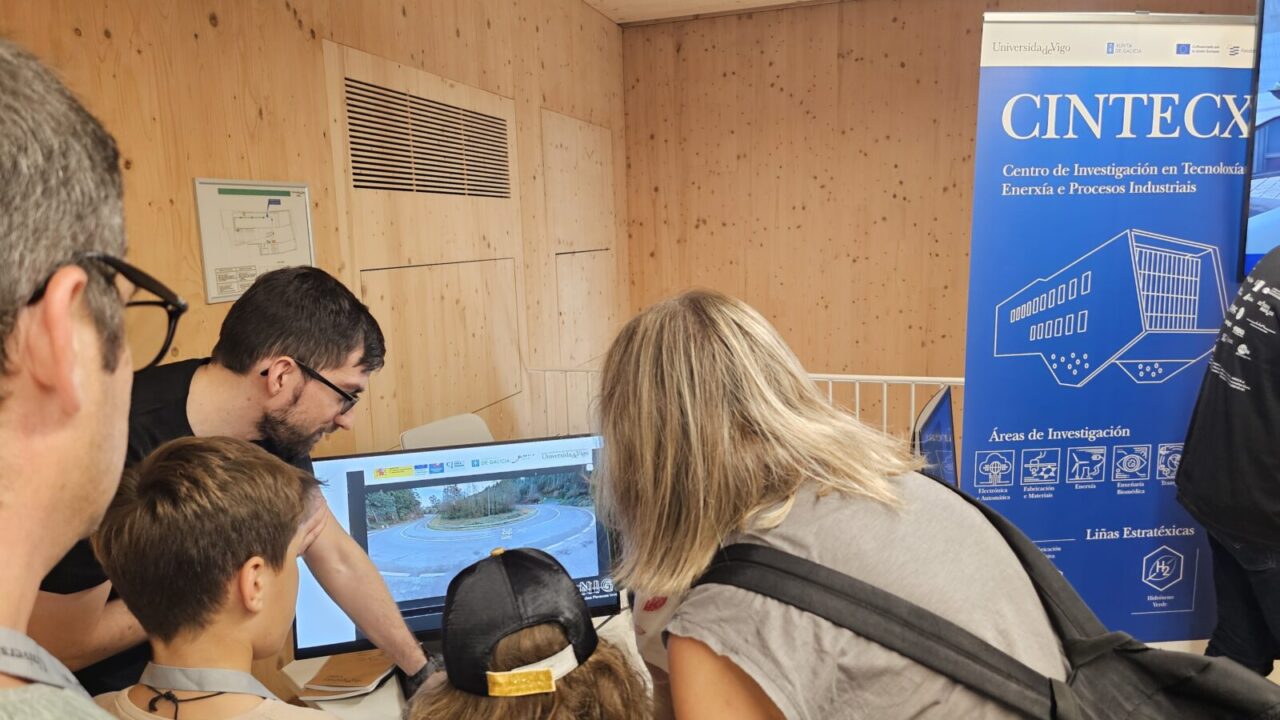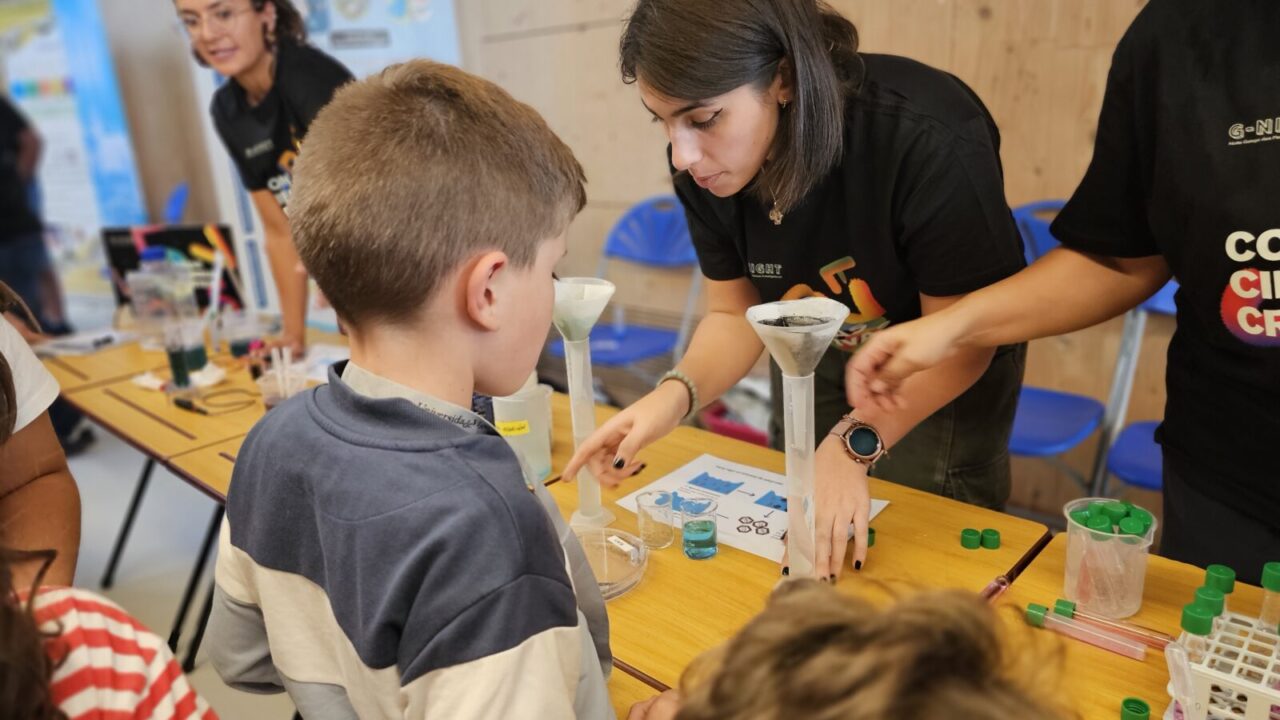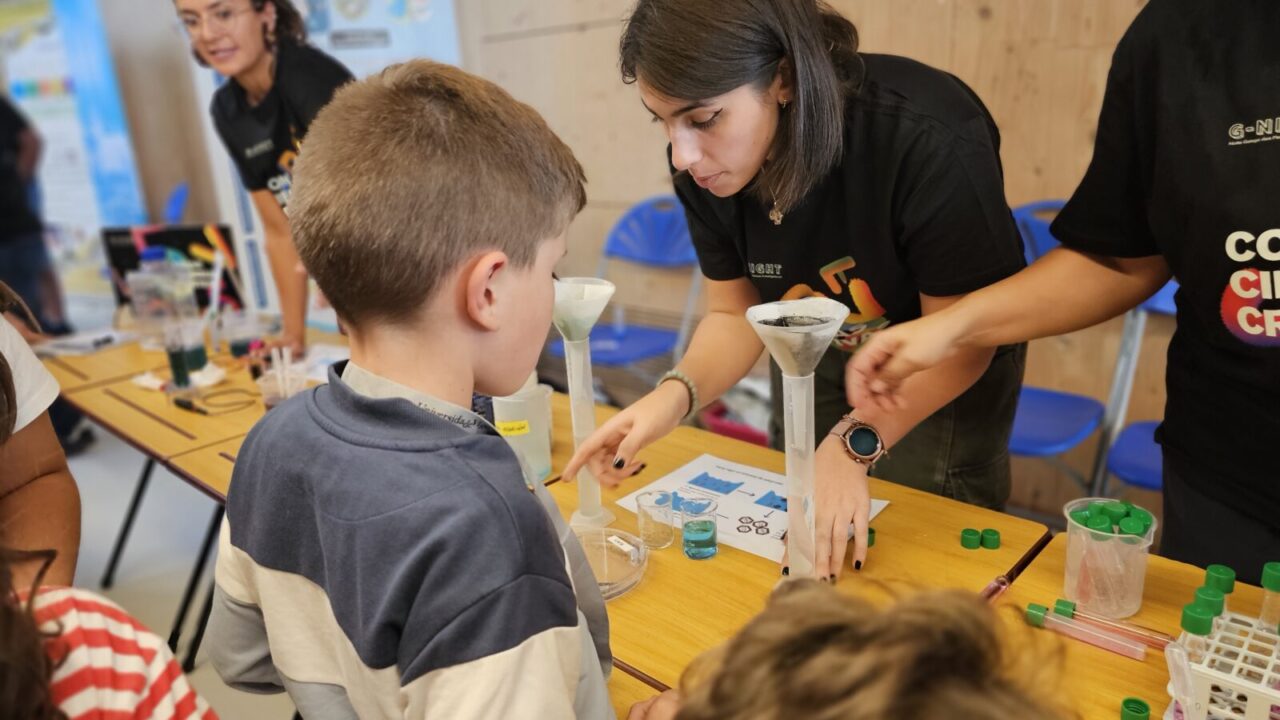DUVI
One more September—five and counting—the G-Night once again brought science and creativity to the streets and squares of Galicia to celebrate and illuminate the Night of the Researchers. This initiative, held simultaneously across the globe, aims to take research out of laboratories and bring it to the public, so that both children and adults can discover, in a playful, entertaining, and above all interactive way, the real impact that scientific and technological activity has on society.
The strongest connection between science and citizens was felt in O Berbés, in Vigo, where the square and the Redeiras building became the epicenter of G-Night with the traditional science fair, this time featuring around thirty workshops for all ages. The theme of the day was creativity and its relationship with scientific knowledge, under the motto Creative Consciences. From 5 p.m. onward, many families gathered in this part of the city to explore, in an engaging and hands-on way, the different lines of research developed by UVigo’s research groups.
Cutting-edge proposals in technology, sustainability, and safety
The Research Center for Technologies, Energy and Industrial Processes (CINTECX) actively participated once again in G-Night, bringing science closer to the public through innovative and experimental proposals. Researchers from the center offered interactive activities that combined cutting-edge technology with social and environmental challenges.
Led by researchers Aida Díez Sarabia, Silvia Escudero Curiel, and Antía Fernández Sanromán from the BIOSUV group, dozens of young people and adults took part in practical experiments to generate hydrogen using a battery and learned about the latest techniques for removing water pollutants. This experience helped attendees understand how science can contribute to a cleaner and more sustainable future.
Meanwhile, to answer the question Can artificial intelligence detect and explain road hazards? Mario Soilán Rodríguez, Ana Sánchez Rodríguez, and Antón Núñez Seoane from the GEOTECH group presented the activity “Artificial Intelligence and Simulation for Road Safety,” explaining how these technologies can help reduce and prevent traffic accidents. The proposal included interactive simulators that drew dozens of participants, who lined up to test them and assess their driving safety. The activity sparked great interest among the public, who got to experience firsthand how AI can become a key ally in saving lives.
In addition to CINTECX, UVigo’s program included workshops on molecular virus evolution, climate change, aerospace research, robotics, microplastics, natural cosmetics, and new materials. There was also an artistic workshop that fused science and traditional weaving to grow a collective root inside the Redeiras building.
In Galicia, the program involved more than a dozen institutions coordinated by the University of Vigo and featured around 200 activities spread across streets, museums, R&D centers, and bars in the seven main cities of Galicia throughout Friday afternoon and evening. Alongside UVigo, G-Night in Galicia also included the universities of Santiago and A Coruña, several CSIC institutes (Iegps, IEO, MBG, IIM, and Incipit), oceanographic centers in Vigo and A Coruña from the Spanish Institute of Oceanography, and other Galician research centers such as Inibic, IDIS, CITMAga, Cesga, and Ecobas. G-Night is part of a European project, using the resources of the participating entities and supported by the Xunta de Galicia through Gain, the Galician Innovation Agency under the Ministry of Education, Science, Universities, and Vocational Training.


